
Construction equipment company Caterpillar (NYSE: CAT) reported Q3 CY2025 results exceeding the market’s revenue expectations, with sales up 9.5% year on year to $17.64 billion. Its non-GAAP profit of $4.95 per share was 9.4% above analysts’ consensus estimates.
Is now the time to buy Caterpillar? Find out by accessing our full research report, it’s free for active Edge members.
Caterpillar (CAT) Q3 CY2025 Highlights:
- Revenue: $17.64 billion vs analyst estimates of $16.62 billion (9.5% year-on-year growth, 6.1% beat)
- Adjusted EPS: $4.95 vs analyst estimates of $4.52 (9.4% beat)
- Adjusted EBITDA: $3.62 billion vs analyst estimates of $3.19 billion (20.5% margin, 13.5% beat)
- Operating Margin: 17.3%, down from 19.5% in the same quarter last year
- Free Cash Flow Margin: 11.7%, down from 19.2% in the same quarter last year
- Market Capitalization: $245.7 billion
"Solid performance from our team generated strong results this quarter, driven by resilient demand and focused execution across our three primary segments," said Caterpillar CEO Joe Creed.
Company Overview
With its iconic yellow machinery working on construction sites, Caterpillar (NYSE: CAT) manufactures construction equipment like bulldozers, excavators, and parts and maintenance services.
Revenue Growth
Reviewing a company’s long-term sales performance reveals insights into its quality. Any business can have short-term success, but a top-tier one grows for years. Luckily, Caterpillar’s sales grew at a decent 8.2% compounded annual growth rate over the last five years. Its growth was slightly above the average industrials company and shows its offerings resonate with customers.
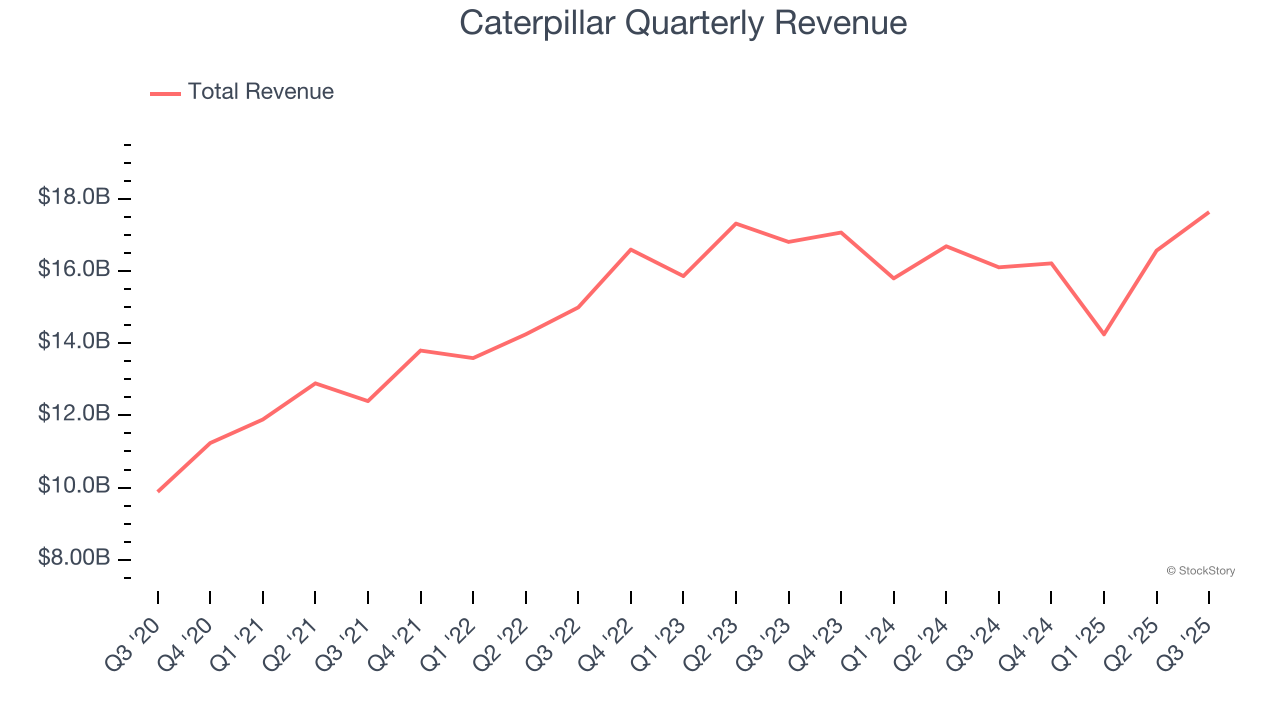
We at StockStory place the most emphasis on long-term growth, but within industrials, a half-decade historical view may miss cycles, industry trends, or a company capitalizing on catalysts such as a new contract win or a successful product line. Caterpillar’s recent performance marks a sharp pivot from its five-year trend as its revenue has shown annualized declines of 1.4% over the last two years. Caterpillar isn’t alone in its struggles as the Construction Machinery industry experienced a cyclical downturn, with many similar businesses observing lower sales at this time. 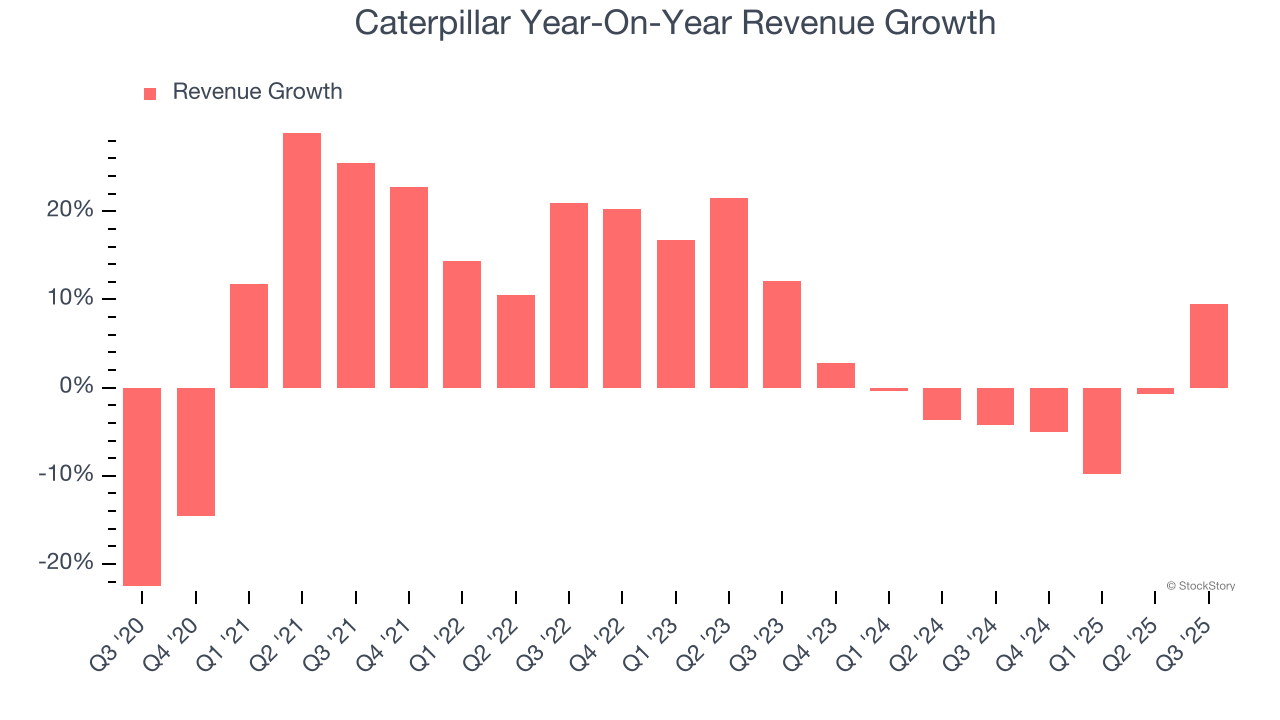
This quarter, Caterpillar reported year-on-year revenue growth of 9.5%, and its $17.64 billion of revenue exceeded Wall Street’s estimates by 6.1%.
Looking ahead, sell-side analysts expect revenue to grow 3.7% over the next 12 months. Although this projection indicates its newer products and services will spur better top-line performance, it is still below the sector average.
Here at StockStory, we certainly understand the potential of thematic investing. Diverse winners from Microsoft (MSFT) to Alphabet (GOOG), Coca-Cola (KO) to Monster Beverage (MNST) could all have been identified as promising growth stories with a megatrend driving the growth. So, in that spirit, we’ve identified a relatively under-the-radar profitable growth stock benefiting from the rise of AI, available to you FREE via this link.
Operating Margin
Caterpillar has been a well-oiled machine over the last five years. It demonstrated elite profitability for an industrials business, boasting an average operating margin of 16.8%. This result was particularly impressive because of its low gross margin, which is mostly a factor of what it sells and takes huge shifts to move meaningfully. Companies have more control over their operating margins, and it’s a show of well-managed operations if they’re high when gross margins are low.
Looking at the trend in its profitability, Caterpillar’s operating margin rose by 3.9 percentage points over the last five years, as its sales growth gave it operating leverage.
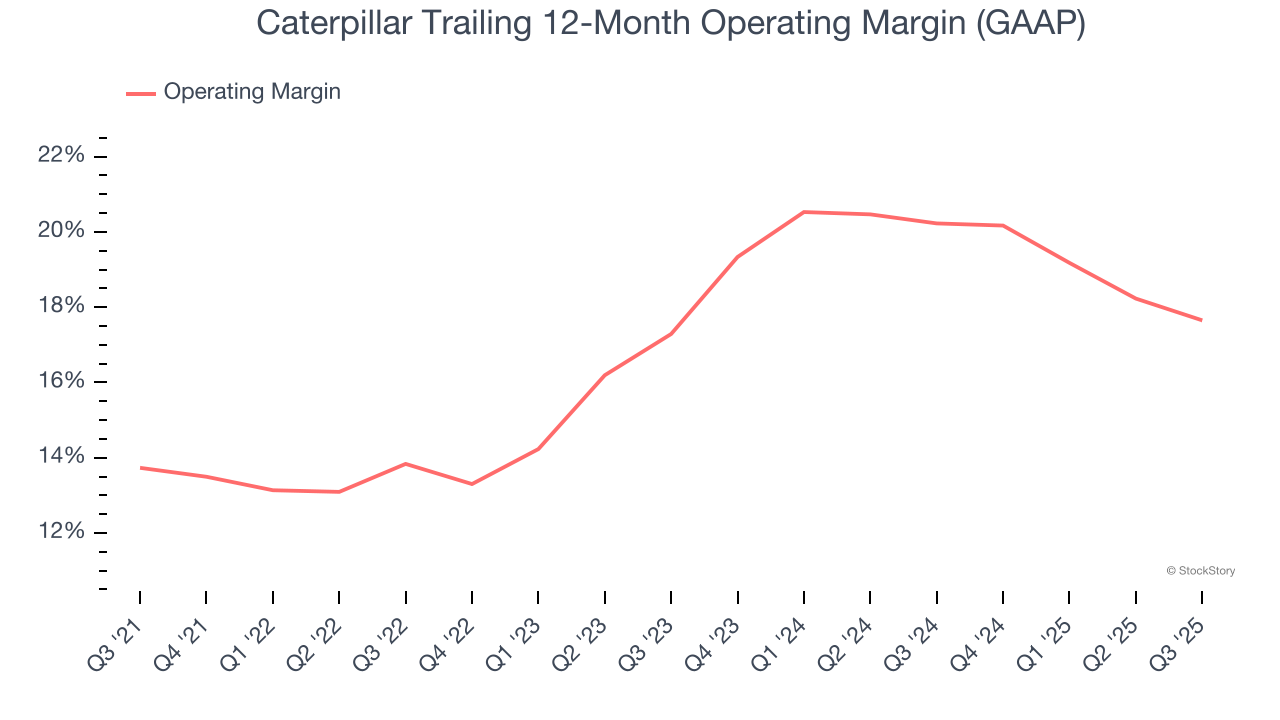
In Q3, Caterpillar generated an operating margin profit margin of 17.3%, down 2.2 percentage points year on year. Conversely, its revenue and gross margin actually rose, so we can assume it was less efficient because its operating expenses like marketing, R&D, and administrative overhead grew faster than its revenue.
Earnings Per Share
Revenue trends explain a company’s historical growth, but the long-term change in earnings per share (EPS) points to the profitability of that growth – for example, a company could inflate its sales through excessive spending on advertising and promotions.
Caterpillar’s EPS grew at an astounding 23.6% compounded annual growth rate over the last five years, higher than its 8.2% annualized revenue growth. This tells us the company became more profitable on a per-share basis as it expanded.
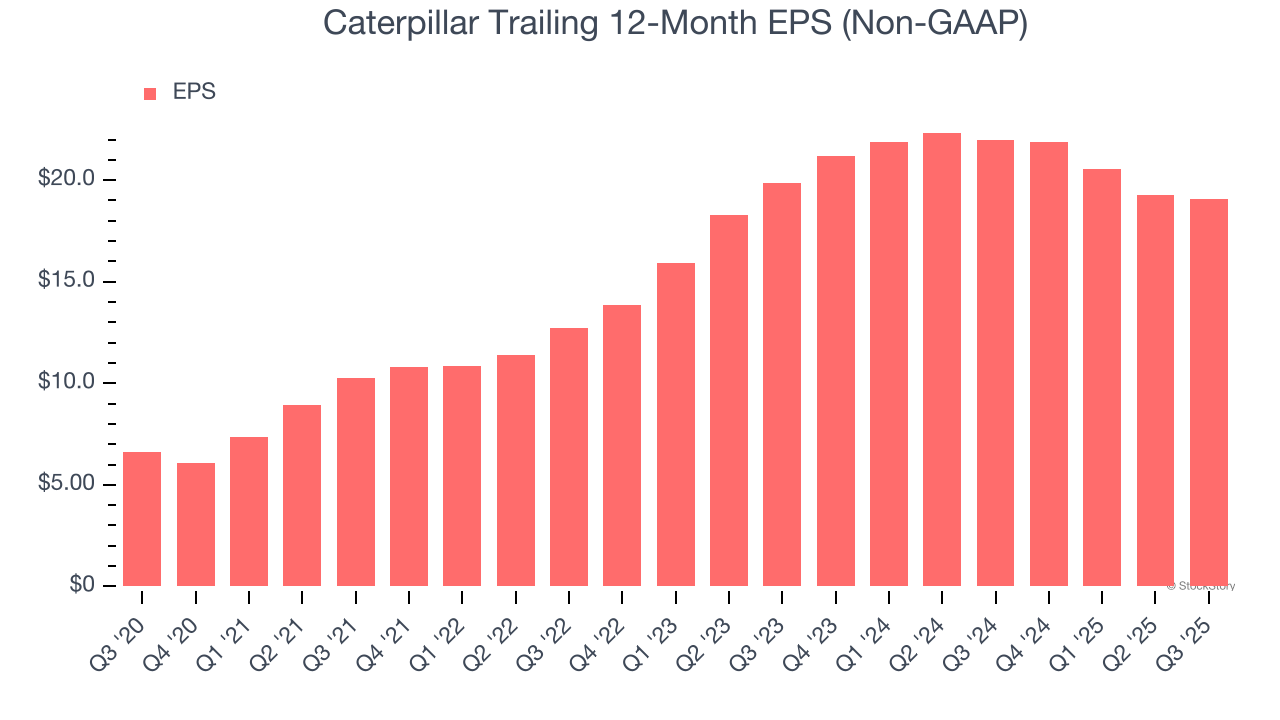
Diving into Caterpillar’s quality of earnings can give us a better understanding of its performance. As we mentioned earlier, Caterpillar’s operating margin declined this quarter but expanded by 3.9 percentage points over the last five years. Its share count also shrank by 13.8%, and these factors together are positive signs for shareholders because improving profitability and share buybacks turbocharge EPS growth relative to revenue growth. 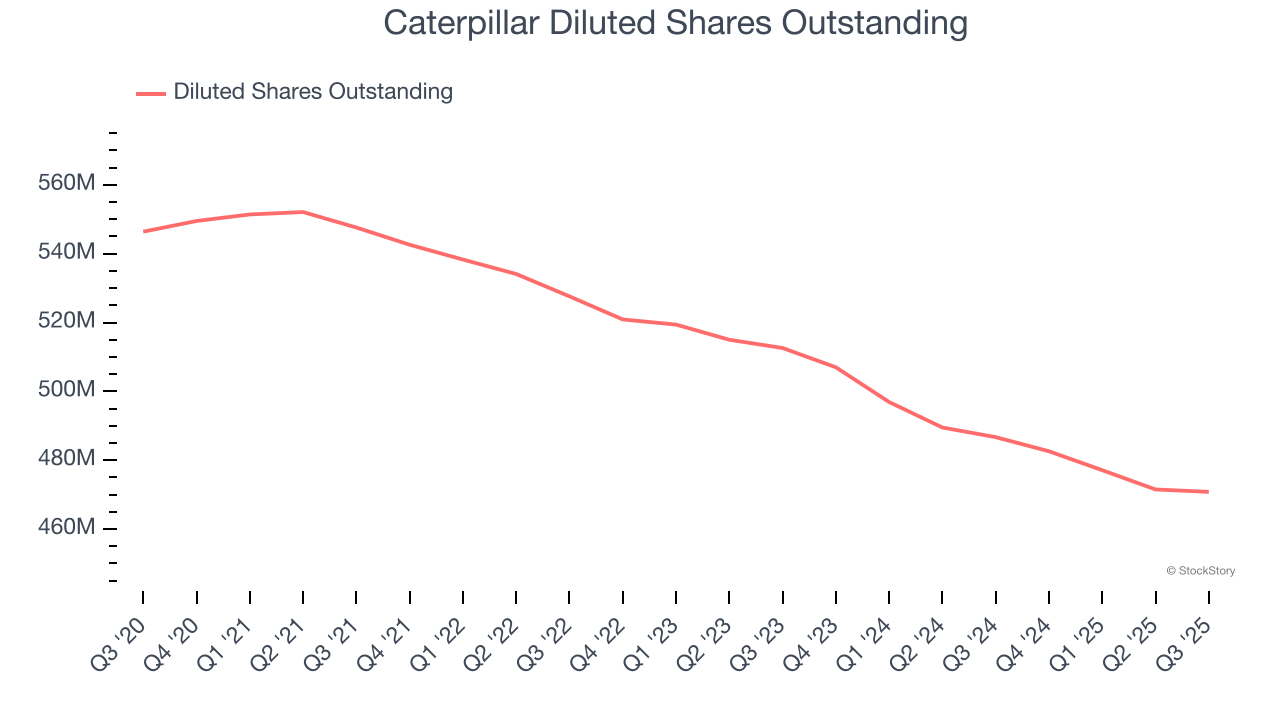
Like with revenue, we analyze EPS over a shorter period to see if we are missing a change in the business.
For Caterpillar, its two-year annual EPS declines of 2% mark a reversal from its (seemingly) healthy five-year trend. We hope Caterpillar can return to earnings growth in the future.
In Q3, Caterpillar reported adjusted EPS of $4.95, down from $5.17 in the same quarter last year. Despite falling year on year, this print beat analysts’ estimates by 9.4%. Over the next 12 months, Wall Street expects Caterpillar’s full-year EPS of $19.06 to grow 2.1%.
Key Takeaways from Caterpillar’s Q3 Results
We were impressed by how significantly Caterpillar blew past analysts’ EBITDA expectations this quarter. We were also excited its revenue outperformed Wall Street’s estimates by a wide margin. Zooming out, we think this was a solid print. The stock traded up 4.9% to $550.32 immediately after reporting.
Caterpillar put up rock-solid earnings, but one quarter doesn’t necessarily make the stock a buy. Let’s see if this is a good investment. When making that decision, it’s important to consider its valuation, business qualities, as well as what has happened in the latest quarter. We cover that in our actionable full research report which you can read here, it’s free for active Edge members.





